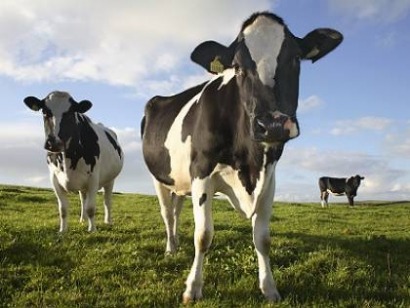
Traditionally, the dairy industry has tended to treat its waste water as a cost. “If there were spills or if a production product was out of specification, it would be flushed down the drain into the waste water,” says waste water and green energy specialist Mike Bambridge, Managing Director of CST Wastewater Solutions. “Such outdated approaches have resulted in bigger and bigger lagoons that are both ground water hazards and big consumers of expensive energy and fossil fuel because of the large energy-intensive aeration systems needed to treat their contents. They also create a lot of sludge and disposal problems.”
In fact there lies a huge, often hidden, potential in using wastewater as a source of renewable energy, rather than seeing it as a cost, says Mr Bambridge, whose company has more than 20 years’ experience in Australasia and which represents the clean water and green energy technologies of Global Water Engineering (GWE).
GWE has built successfully more than 250 plants producing biogas as part of the industrial effluent clean-up system, of which more than 75 were supplied with subsequent biogas utilization systems for clients worldwide. Users of GWE technologies extend from the new $A120 million Bluetongue Brewery in Australia to global concerns such as Budweiser, Chang, Carlsberg, Coca Cola, Corn Products Int’l., Danone, Fosters, Heineken, Interbrew, Kraft, National Starch & Chemicals, Nestlé, Pepsi Cola, SAB-Miller, San Miguel, Singha, Sunkist and Tsingtao, Cadbury Schweppes.
Many of the latest installations use advanced technologies – including anaerobic pre-treatment of water and aerobic polishing – to enhance water discharge purities while converting waste to methane to be burned to power boiler and hot water systems, for example, or to power generators and permanently replace fossil fuels. On average the removal efficiency of GWE’s anaerobic wastewater treatment installations is as high as 90-95%, easily bringing the organic load down to regulatory discharge standards for most types of wastewater.
GWE CEO Mr Jean Pierre Ombregt says the concept of using wastewater to create green energy is much more widely applicable than often realized. “Any factory with a biological waste stream or wastewater with high COD (Chemical Oxygen Demand) can easily use this model to generate energy – particularly the dairy industry, for which GWE technologies such as its Flotamet™ system combined with its proprietary Dissolved Biogas Flotator (DBF) are specifically designed to take the high levels of fats and oils prevalent in dairy factory effluents,” says Mr Ombregt.
So far, most industries have mainly been focusing on treating their effluent to meet local discharge standards. By doing so, wastewater treatment installations have only generated additional costs and have never been seen as revenue generators. “However, applying anaerobic wastewater treatment sheds a whole different light on the cost structure of wastewater treatment infrastructure. It can now actually become a substantial additional source of income for many processing plants,” comments Bambridge.
Dairy wastewater is well suited for anaerobic treatment, followed by an aerobic polishing treatment if required, e.g. for direct river discharge. GWE has several anaerobic systems, some of which can be applied on dairy wastewater.
There is no such thing as a standard dairy factory, and a standard dairy wastewater treatment. There are different types of dairy factories with different products (milk packaging, milk powder, cream, butter, yogurt, ice cream, cottage cheese, soft cheese, hard cheese, fruit based products, custard, etc) all with very different wastewaters, and also different levels of product recovery (e.g. whey and/or whey proteins). In the end, the type of production determines the wastewater characteristics.
Power from effluent
Wastewaters from the dairy industry are typically highly loaded with organic pollutants that can be treated advantageously by means of anaerobic processes. Closed anaerobic reactors generate large quantities of methane (CH4) from the organic materials in the wastewater that can diminish or even completely replace the use of fossil fuels in the production process.
To bring some perspective to the value, one ton of COD (chemical oxygen demand) digested anaerobically can result in 350Nm3 of methane, equivalent to 0.15MW of power.
For specific industry applications with high organic loads, enough biogas can be generated to fully cover a factory’s energy needs and still have a biogas surplus to feed it into power generators and sell electricity to the national grid, often generating carbon credits, where these apply, as well as profit.
For a greener footprint
But it doesn’t end there. The GWE closed anaerobic process systems prevent large quantities of CH4 being emitted into the atmosphere. With CH4 being 21 times more harmful than CO2, GWE’s anaerobic wastewater solutions can also qualify for Emission Reduction Certificates for projects in countries listed under the United Nations Kyoto Clean Development Mechanism (CDM) and Joint Implementation (JI) programs.
Besides the economic advantage of efficient anaerobic wastewater treatment, there is clearly also the environmental advantage, significantly reducing factories’ carbon footprint. Not only by supplying renewable energy and thus reducing or even eliminating the use of fossil fuels, but also by replacing more traditional, CH4-polluting, open lagoons and by replacing power consuming and sludge producing traditional aerobic WWTPs.
For additional information:

